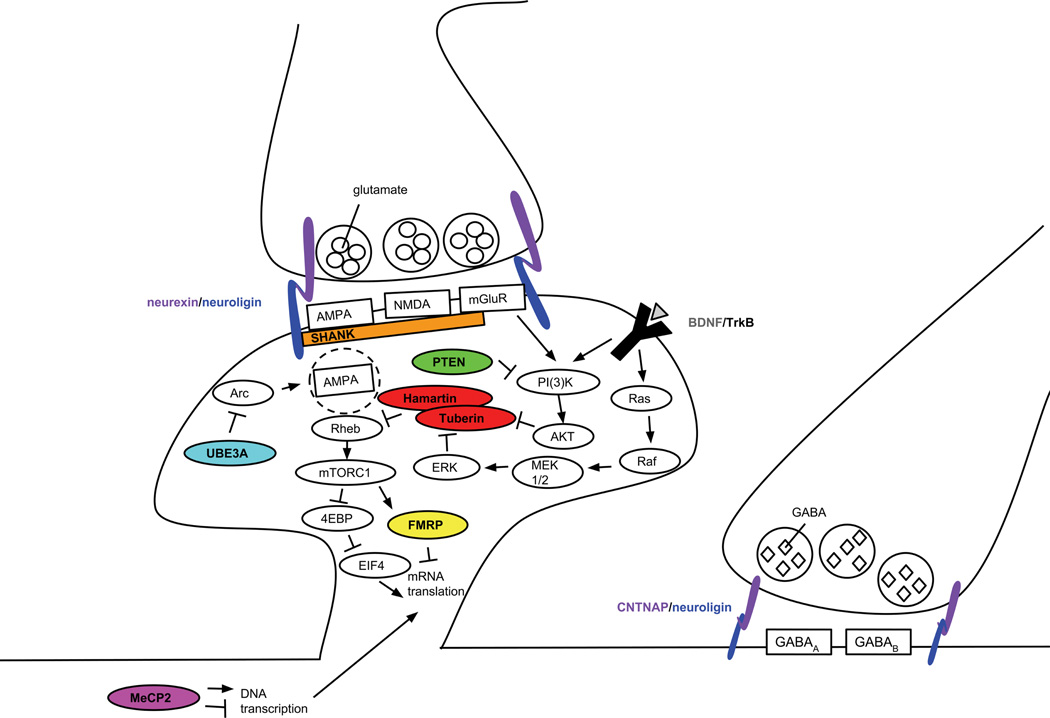Figure. Monogenic mouse models of ASDs have disruptions in overlapping molecular pathways.
The epigenetic and transcriptional regulator MeCP2 controls the expression of hundreds of different proteins, including BDNF. When BDNF binds to TrkB, its receptor, the resulting signaling pathways converge with pathways known to influence local protein synthesis. The RNA-binding protein FMRP is directly involved in suppressing the translation of mRNA, but other proteins implicated in ASDs, including hamartin and tuberin (the proteins encoded by TSC1 and TSC2), as well as PTEN are upstream signaling molecules that converge on this pathway. The synaptic organizing proteins from the Shank and neurexin/neuroligin families influence these pathways indirectly by affecting the localization and function of glutamate receptors. Similarly, the ubiquitin protein ligase Ube3a normally suppresses the internalization of AMPA receptors, thereby affecting neuronal signaling and plasticity.

